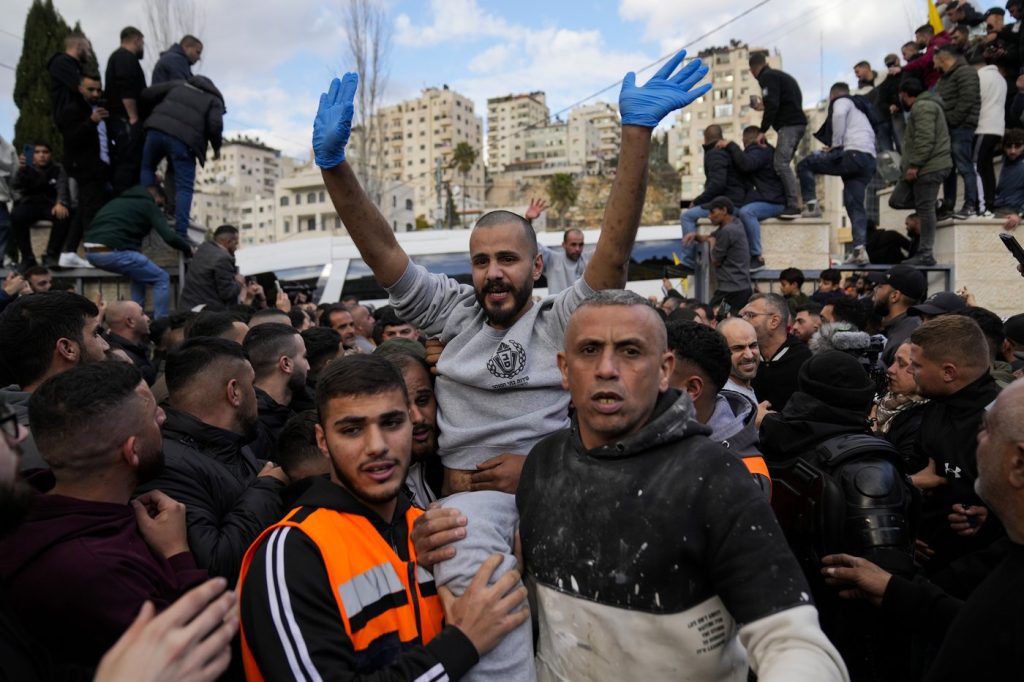The latest ceasefire agreement between Israel and the Hamas militant group, which took place after 15 months of sustained conflict, has completed its first week. This ceasefire marks the second such agreement in this prolonged conflict and has shown some progress, including Hamas releasing hostages and Israel freeing nearly 300 Palestinian prisoners. However, the deal has encountered its first significant challenge.
On Saturday, Israel announced the intended release of a female civilian hostage named Arbel Yahoud. However, this planned liberation has faced delays, which has subsequently affected the return of hundreds of thousands of displaced Palestinians to northern Gaza. This complicated situation comes as the ceasefire was meant to foster a more peaceful environment and facilitate humanitarian efforts, but tensions remain high.
Since the beginning of the ceasefire, significant developments have occurred. On Day 1 of the ceasefire, three Israeli hostages were released from Gaza, followed shortly by the release of 90 Palestinian prisoners by Israel. By Saturday, another four hostages were freed along with 200 Palestinian prisoners. Israeli forces have retreated to buffer zones in Gaza, military engagements have ceased, and numerous trucks carrying humanitarian aid have successfully entered the region. Many displaced Palestinians have also begun returning to their homes amid the escalating hope for lasting peace.
Looking ahead, there are crucial steps to follow within the next five weeks. Starting from Day 14 of the ceasefire, which falls next Saturday, the protocol dictates that three hostages will be released every seven days in exchange for additional Palestinian prisoners. The ultimate goal is to secure the freedom of all living women, children, and older individuals held by Hamas. However, there are complications since Israel believes that at least a third of the more than 90 captives still in Gaza have been killed, either during the conflict's onset on October 7, 2023, or in captivity.
The situation concerning Arbel Yahoud remains uncertain, as the initial agreement, which was intended to include the release of civilian women on Saturday, did not go as planned. The delay in Yahoud’s release has impeded the return of Palestinians to northern Gaza, and Israel has cited this as the reason for restricting access through the Netzarim corridor. Hamas has stated that Israel is accountable for the delays in the agreement's execution and its subsequent repercussions. Furthermore, a senior Hamas official indicated that Yahoud is expected to be released next week, and negotiators believe this matter can be resolved as it is considered a "minor issue."
The unrest surrounding the Netzarim corridor was evident as gathering crowds of Palestinians anxiously awaited to re-enter northern Gaza, a region that has experienced substantial destruction. Reports surfaced that one Palestinian was shot and killed near the Netzarim corridor, illustrating the ongoing tensions as the ceasefire persists.
As the ceasefire progresses, discussions about the second phase are slated to begin on Day 16, scheduled for February 3. In this phase, all remaining hostages are expected to be released in exchange for a complete Israeli military withdrawal from Gaza and the establishment of a “sustainable calm.” However, there are contentious terms with both sides indicating their unwillingness to comply with certain demands; for instance, Israel has stated that it will not agree to a full withdrawal until Hamas’s military capabilities are dismantled, while Hamas insists it will not release the last hostages until Israeli forces have completely vacated the territory.
Future discussions will also necessitate an agreement on governance in Gaza. Although Hamas has shown a willingness to potentially cede power, it still seeks a role in future governance — a condition that Israel firmly rejects. Furthermore, Hamas is unlikely to disarm, complicating any prospects for lasting cessation of hostilities.
If negotiations reach a third phase, it may prove less contentious than previous discussions. The focus could shift to the return of the remaining hostages' bodies in exchange for a reconstruction plan proposed for a three- to five-year duration to aid in rebuilding Gaza. However, critical questions persist regarding who will finance such initiatives, leaving many issues unresolved as the ceasefire continues to evolve.










